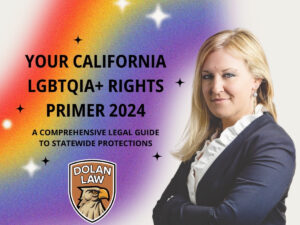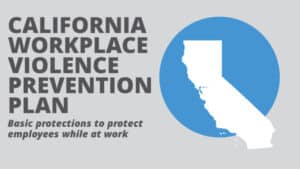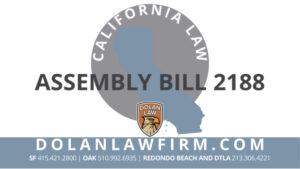
Maria from San Francisco writes: “Chris, Susan Fowler’s account of her harassment at Uber seems far too typical of what women in tech experience. Why is it that so many women in tech are discriminated against? What should we do?”
Thank you, Maria, for your timely question. For those not aware, on February 19, 2017, Susan Fowler alleged in a detailed and lengthy account on her personal blog that she had been discriminated against and sexually harassed by her direct supervisor when she worked as a software engineer at Uber.
Fowler reported the harassment to Uber’s HR department which took no action. In response to the public outcry generated by Fowler’s blog, Uber announced it would undertake an internal investigation.
Maria, I agree that Fowler’s account mirrors the experiences of many women in tech. Nearly a decade ago, the Center for Work-Life Policy (now known as the Center for Talent Innovation) released a groundbreaking study on women in science, engineering, and technology entitled “The Athena Factor.” As their male colleagues’ careers were advancing, the report found women’s careers start to stall, and many became “marginalized by hostile macho cultures.” After 10 years of work experience, the researchers reported that 41% of women in tech left the tech industry, compared with just 17% of men. Recent surveys find women continue to leave the tech industry in mid-career at alarming rates.
Indeed, now, less than 1 in 5 employees in the tech industry are women, despite the fact that women make up more than 50% of the workforce. Particularly alarming is the fact that the percentage of women in tech was actually higher in the 1980s than it is today, which means women are leaving the tech industry at a higher rate or simply not pursuing a career in the field at all. Recent statistics indicate women are leaving the tech industry at a 45% higher rate than men and half tech startups have no women installed on their leadership teams. Further, an Indeed study found, only about half (53%) of women felt they had the same advancement opportunities as their male counterparts, and close to a third (28%) of women quit their jobs in tech because of career stagnation.
Why do women encounter high barriers to entering and advancing in the tech industry? Rampant sexism is the short answer.
Negative stereotypes concerning the abilities of women engineers held by senior managers, severe isolation and exclusion of women from social and networking opportunities, a dearth of women mentors, opaque career paths, and unwanted sexual advances are among the obstacles most often reported by women. In addition, tech firms routinely fail to hold their top performers accountable for engaging in sexual harassment.
Additionally, tech startups often fail woefully short with respect to the benefits packages offered to employees. A Harvard Business Review survey gleaned that healthcare, time off and flexibility were statistically more important factors for job hunting women than men. Tech startups also tend to struggle with establishing policies and procedures that bolster employee support systems most commonly utilized by women, such as pregnancy leave policies, sexual harassment policies and clear FMLA/CFRA medical leave procedures. Often tech startups fail to designate a separate role to handle Human Resources issues, much less establish a separate department. This leads to lack of clarity and direction on behalf of employees when it comes to understanding the resources available and how to ask for them. Further, a company’s willful ambivalence to its legal obligations can create a culture of misinformation, insecurity and fear of speaking out.
Maria, you ask what women in tech should do. Know your rights and object if they are violated is my response. Gender discrimination was once pervasive in the legal, medical and other professions. That is no longer true because courageous women in these fields stepped forward and asserted their legal rights. I believe women in tech should do the same.
Under California law, employers must provide workplaces that are free of sexual harassment which is defined as unwanted sexual advances, or visual, verbal, or physical conduct of a sexual nature. Further, the law prohibits retaliation for reporting a good faith belief of harassment or discrimination.
There are two primary types of employment harassment:
- Quid Pro Quo Harassment and
- Hostile Work Environment. Quid Pro Quo Harassment refers to when submission to sexual
conduct is demanded or made a condition of employment. What Fowler alleged constitutes quid pro quo harassment.
A hostile work environment occurs when a woman experiences severe or pervasive offensive conduct which interferes with her ability to perform her job. The offensive conduct can take many forms including leering, sexual gestures, comments of sexual nature, suggestive or obscene letters, and touching or blocking movements.
Here are the steps I recommend that women experiencing sexual harassment take:
- First, create a record of the harassment. Save any relevant email or text messages. Create a written record or timeline of what occurred.
- Second, report the harassment to your company. Send an email, or write a note to the harasser’s supervisor and head of HR. Look in your employee handbook to see whom is designated to receive complaints and make sure that they receive a copy too. Keep notes of what you send and whom you speak to. Under the law, the company is obligated to conduct a good faith investigation of the complaint and to take prompt action to stop the harassing conduct.
- Third, the employee may file a complaint with the California Department of Fair Employment and Housing (DFEH). The DFEH attempts to help the parties voluntarily resolve their dispute. If the DFEH finds sufficient evidence of discrimination and settlement efforts fail, the DFEH may file a lawsuit against the company on the employee’s behalf.
- Finally, the employee should consider filing a lawsuit, with the assistance of a lawyer, against the person who harassed her and company. The employee must first ask for a right-to-sue letter from the DFEH that will allow her to proceed with a private, civil, legal action against the person who harassed her and company.
Do not delay. There are statutes of limitation controlling the time frame in which you can bring a legal claim. It is important to consult with an attorney right away if you feel you have been subjected to unlawful harassment, discrimination or retaliation at work. Most trial attorneys will provide an initial consultation free of charge.
By attorney Christopher B. Dolan, owner of the Dolan Law Firm. Email Chris questions and topics for future articles to help@dolanlawfirm.com
Contact A Sexual Harassment Attorney At The Dolan Law Firm
Chris Dolan and the employment attorneys at the Dolan Law Firm have a long and successful track record in assisting women who have been sexually harassed and discriminated against on the basis of their gender. We represent female employees who have experienced unequal pay, lack of promotional opportunities, hiring discrimination, sexual harassment, and retaliation for submitting complaints of harassment and discrimination, or who have been wrongfully terminated.
We work closely with our courageous clients through each step of the legal process and are dedicated to achieving justice for them. Please call us today at 415-636-8160 or complete the form on our contact page. We will review your case for free, confidentially, and with no-obligation on your part.










